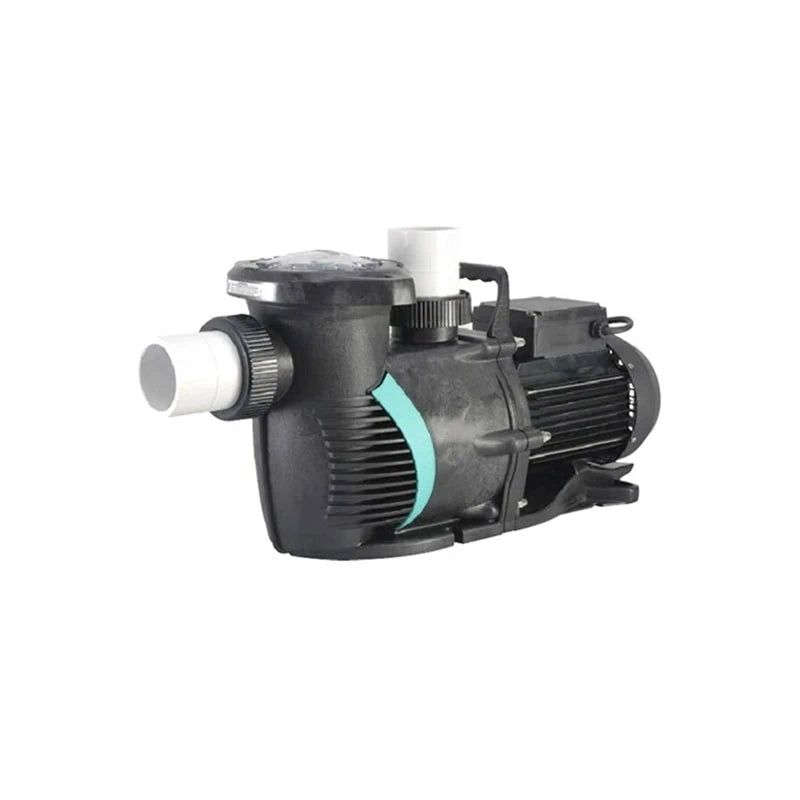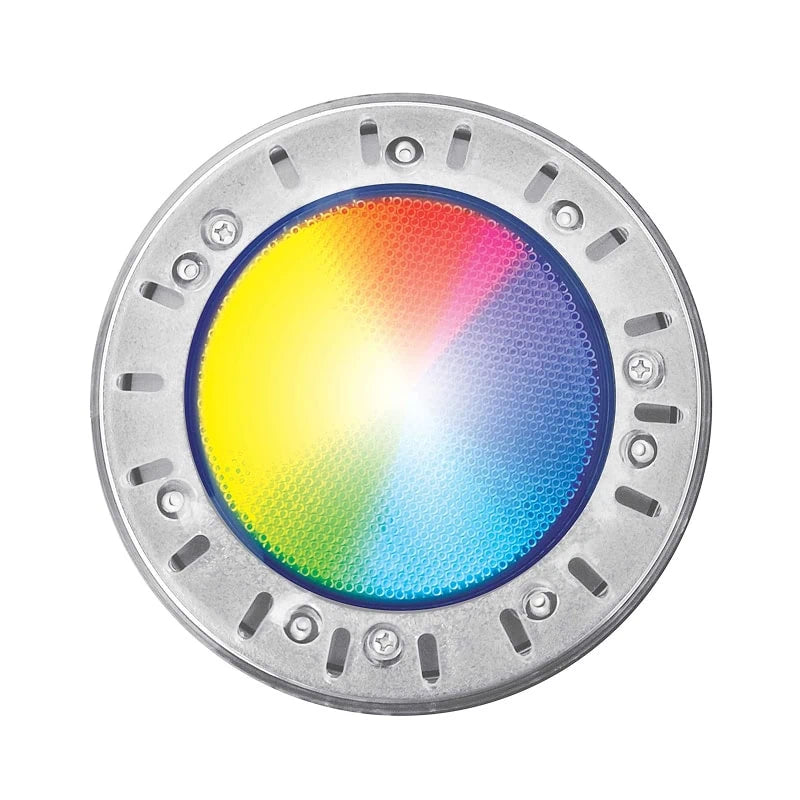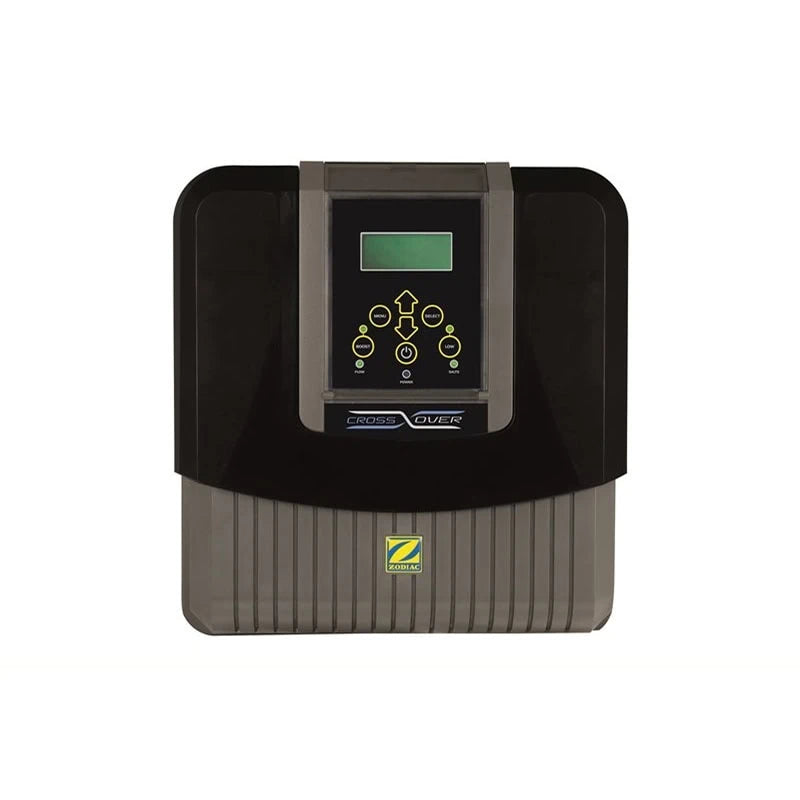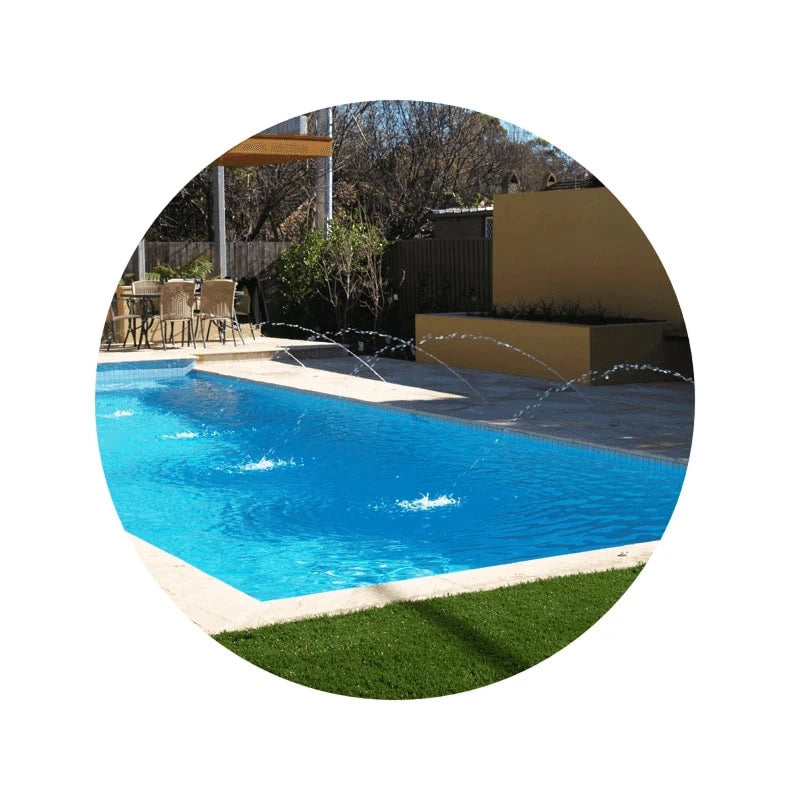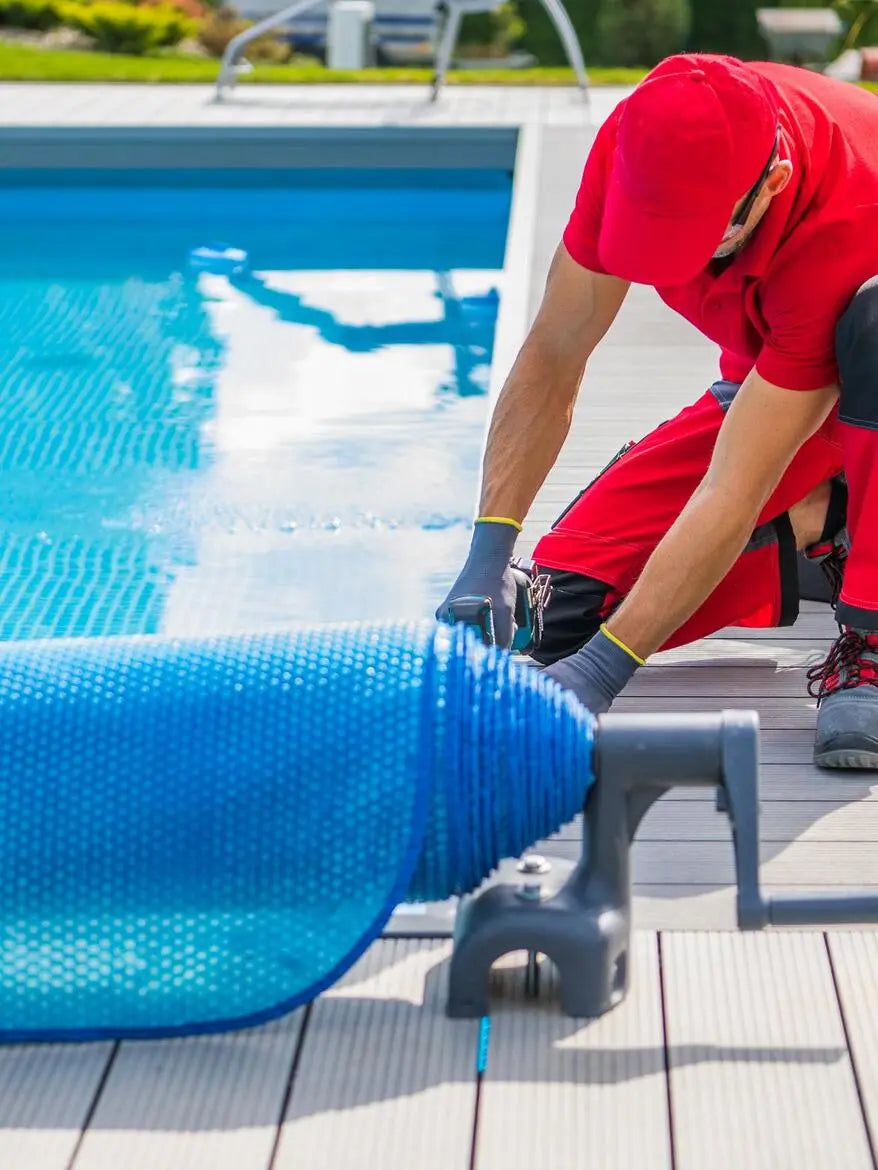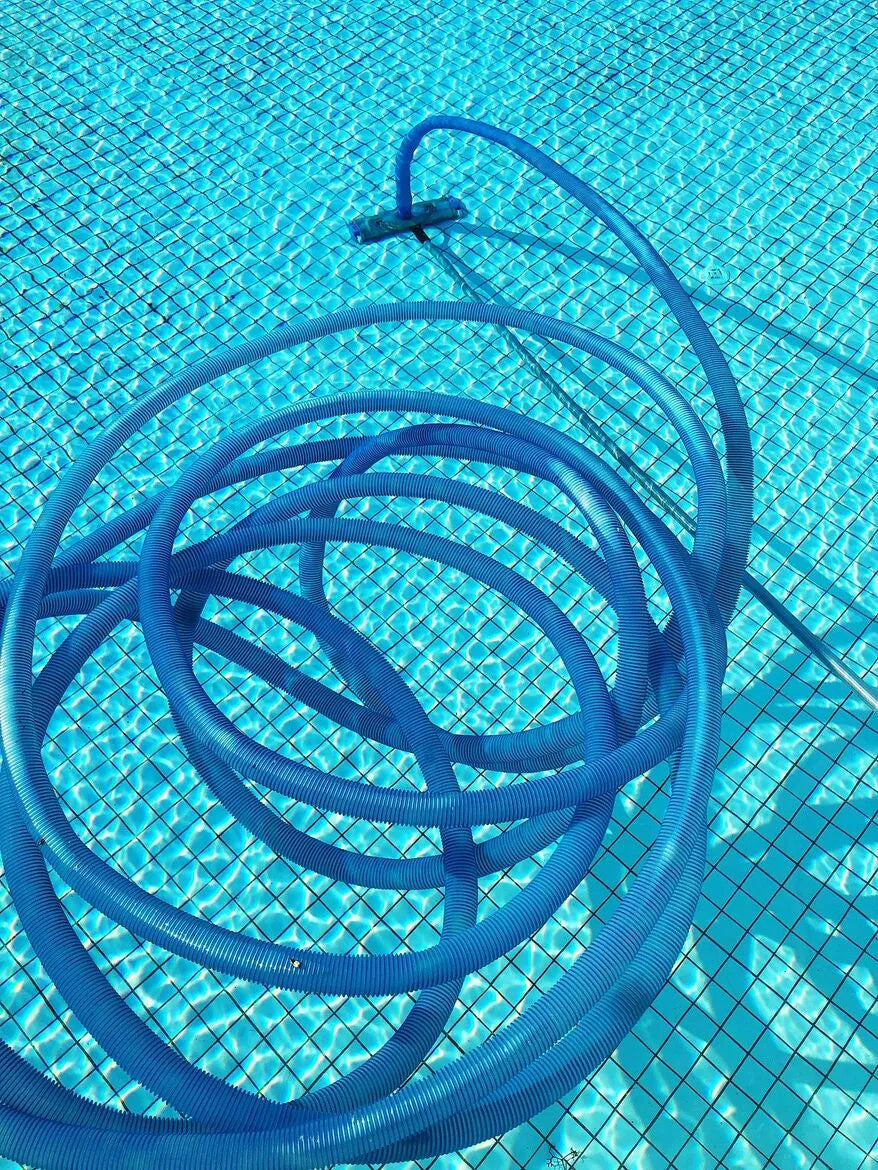How Much Chlorine to Add to Pool?

Managing chlorine levels is crucial for pool maintenance. Chlorine sanitises pool water, but how much chlorine to add to pool? This guide covers everything about pool chlorinators, from basic info to advanced techniques. It's perfect for new pool owners or those looking to improve their maintenance routine.
Pool Chlorine Basics
What Is Pool Chlorine?
Chlorine is a chemical element widely used as a disinfectant. In swimming pools, it serves as the main agent for killing bacteria, algae, and other harmful microorganisms. By adding chlorine to your pool, you ensure that the water remains clean and safe for swimming. Its effectiveness lies in its ability to react with water to form hypochlorous acid, which is highly effective at eliminating pathogens.
Why Is Chlorine Important for Pool Maintenance?
Chlorine's primary role in pool maintenance is to keep the water sanitary. Without proper chlorination, your pool can become a breeding ground for bacteria and algae, leading to cloudy water, unpleasant odours, and potential health risks. Maintaining the right level of chlorine ensures that your pool water is clear, inviting, and safe for swimmers.
Different Forms of Pool Chlorine
Chlorine comes in various forms, each with its pros and cons. Liquid chlorine is easy to use and quickly dissolves in water. Granular chlorine is more concentrated and better for shock treatments. Chlorine tablets are convenient for regular maintenance, slowly dissolving over time to provide a consistent chlorine level. Understanding these forms will help you choose the best type for your pool's needs.
How to Calculate the Right Chlorine Dosage
Several factors influence the amount of chlorine needed for your pool. Larger pools require more chlorine, while higher water temperatures and increased usage (such as during pool parties) can also increase chlorine demand. It's essential to consider these variables when calculating the appropriate chlorine dosage.
👉 Pool Size
The size of your pool is the starting point for determining how much chlorine to add. Chlorine dosage is typically measured in parts per million (ppm), and the ideal range for most pools is between 1-3 ppm. To calculate the required amount, you'll need to know your pool's volume in gallons or litres. Using this information, you can follow standard dosage guidelines to achieve the desired chlorine level.
👉 Chlorine Dosage Calculation Methods
You can calculate chlorine dosage manually using simple formulas, or you can rely on automatic systems that monitor and adjust chlorine levels for you. Manual calculation involves measuring the current chlorine level and adding the necessary amount to reach the target range. Automatic systems use sensors to continuously monitor water conditions and dispense chlorine as needed, providing a hands-free solution.
👉 Common Mistakes
One common mistake is not accounting for all factors affecting chlorine demand, such as pool usage and sunlight exposure. Another is failing to test chlorine levels regularly, leading to over or under-chlorination. Avoid these pitfalls by staying diligent with testing and adjustments, ensuring your pool water remains balanced and safe.
Types of Chlorine Products and Their Application Methods
Liquid Chlorine
Liquid chlorine is popular for its ease of use and quick action. It's ideal for quickly raising chlorine levels but can be less stable than other forms, requiring frequent additions. When using liquid chlorine, pour it around the pool's perimeter for even distribution, and always follow the manufacturer's instructions for dosage.
Chlorine Tablets
Chlorine tablets are convenient and provide a slow, steady release of chlorine. Place them in a floating dispenser, skimmer basket, or automatic chlorinator. This method ensures consistent chlorination, reducing the need for frequent adjustments. Remember to handle tablets with care and avoid direct contact with pool surfaces to prevent staining.
Granular Chlorine
Granular chlorine is highly concentrated and excellent for shock treatments or quick adjustments. Dissolve it in a bucket of water before adding it to the pool to prevent damage to pool surfaces. Spread the solution evenly across the water's surface, and avoid adding granules directly to the pool.
Saltwater Chlorinators
Saltwater chlorinators convert salt into chlorine through electrolysis, providing a continuous supply of chlorine without the need for frequent additions. This system offers softer water and reduces the harshness associated with traditional chlorine. It's a low-maintenance option that ensures a consistent chlorine level while being gentle on swimmers and pool equipment.
How to Add Chlorine to Your Pool
Step-by-Step Guide to Adding Chlorine
- Test the current chlorine level using a reliable test kit.
- Calculate the required chlorine dosage based on pool size and current chlorine level.
- Choose the appropriate chlorine product (liquid, tablets, or granules).
- Add chlorine in the evening to reduce loss from sunlight.
- Distribute the chlorine evenly around the pool's perimeter.
Methods of Chlorine Application
There are various methods to add chlorine to your pool. A pool float holds chlorine tablets and dispenses them slowly. An automatic chlorinator connects to your pool's filtration system for consistent dosing. A salt cell is part of a saltwater chlorination system, producing chlorine from salt in the water.
To ensure even distribution:
- Run your pool pump for several hours after adding chlorine.
- Brush the pool walls and floor to help disperse the chlorine.
- Regularly check and clean your pool's filtration system to maintain optimal water circulation.
Common Mistakes
Avoid adding chlorine directly to the pool surface, as it can cause staining or damage. Don't mix different types of chlorine products, as this can create dangerous chemical reactions. Always follow the manufacturer's instructions for safe and effective use.
Monitoring and Maintaining Proper Chlorine Levels
✅ How to Test Chlorine Levels
Testing chlorine levels is crucial for maintaining balanced water. Use test strips, liquid test kits, or electronic testers to measure free chlorine levels. Test the water at least twice a week and after heavy usage or rain to ensure it remains in the ideal range.
✅ Ideal Free Chlorine Levels
The recommended free chlorine level varies by pool type. For residential pools, maintain levels between 1-3 ppm. Public pools, which see higher bather loads, may require levels between 3-5 ppm. Always refer to local regulations and guidelines for specific requirements.
✅ What to Do When Free Chlorine Levels Don't Rise
If your chlorine levels remain low despite adding chlorine, it could indicate an issue with water chemistry or high chlorine demand. Test for combined chlorine (chloramines) and shock the pool if necessary. Ensure your pool's pH and alkalinity are balanced, as these factors affect chlorine's effectiveness.
✅ How Often Should You Check Chlorine Levels
Regular testing is key to maintaining balanced water. Test chlorine levels at least twice a week and more frequently during hot weather or periods of heavy usage. Keeping a log of your test results can help identify patterns and make adjustments easier.
✅ Adjusting Chlorine Levels Based on Test Results
If chlorine levels are too low, add the required amount of chlorine to reach the target range. If levels are too high, stop adding chlorine and allow sunlight and pool usage to lower the levels naturally. Regular monitoring and adjustments will keep your pool water safe and inviting.
Advanced Chlorination Techniques
Pool Shocks
Shocking your pool involves adding a large dose of chlorine to eliminate contaminants and break down chloramines. Regular shocking, especially after heavy usage or rain, helps maintain water clarity and sanitation. Use a high-quality shock product and follow the manufacturer's instructions for safe and effective use.
Chlorine Stabilisers
Chlorine stabilisers, such as cyanuric acid, protect chlorine from being broken down by sunlight. Adding a stabiliser can extend the effectiveness of your chlorine, reducing the frequency and amount needed. Be mindful not to over-stabilise, as high levels can reduce chlorine's efficiency.
Automatic Chlorine Dispensers
Automatic chlorine dispensers simplify pool maintenance by consistently adding chlorine as needed. These systems monitor water conditions and adjust chlorine levels accordingly. They provide a hands-free solution and ensure optimal water balance, making them a valuable addition to any pool.
Balancing Chlorine with Other Pool Chemicals
Maintaining balanced water involves more than just chlorine. Proper pH, alkalinity, and calcium hardness levels are essential for chlorine's effectiveness. Regularly test and adjust these parameters to ensure your pool's water remains balanced and safe for swimming.
Safety Precautions When Handling Chlorine
Personal Safety
Always handle chlorine products with care. Wear protective gloves and eyewear, and avoid inhaling fumes. Store chlorine in a cool, dry place, away from direct sunlight and other chemicals. Keep chlorine out of reach of children and pets to prevent accidental exposure.
Environmental Impact
While chlorine is effective at sanitising pool water, it's essential to use it responsibly to minimise environmental impact. Avoid over-chlorinating and ensure proper disposal of chlorine containers. Consider using eco-friendly alternatives and technologies to reduce your pool's environmental footprint.
Dealing with Chlorine Spills or Overdose
In case of a chlorine spill or overdose:
- Ventilate the area and avoid direct contact with the substance.
- Clean up spills promptly and dispose of waste according to local regulations.
- If you suspect a chlorine overdose in your pool, test the water and follow guidelines to reduce levels safely.
Common Chlorination Myths and Misconceptions
❌ Myth: All Chlorine Products Are the Same
Not all chlorine products are created equal. Different forms have unique properties and applications, making it essential to choose the right type for your pool's needs. Understanding these differences will help you make informed decisions and maintain optimal water quality.
❌ Myth: More Chlorine Is Always Better
Adding excessive chlorine can lead to imbalanced water and potential health risks. The goal is to maintain the recommended chlorine levels, not exceed them. Regular testing and adjustments will ensure your pool remains safe and enjoyable for swimmers.
❌ Myth: Chlorine Smell Indicates High Chlorine Levels
A strong chlorine smell often indicates the presence of chloramines, a byproduct of chlorine reacting with contaminants. Properly balanced water with the right chlorine levels should have little to no odour. Regular shocking and maintenance will help eliminate chloramines and keep your pool smelling fresh.
Our Case Study
One story involved a family struggling to keep their pool clean during a hot summer. They had to shock their pool to manage the chlorine levels constantly. We introduced them to an automated chlorination system, which made maintenance easy and kept the water crystal clear. Seeing their relief when they realised they could enjoy their pool with little effort was priceless.
On the flip side, we've learned valuable lessons too. One client tried a DIY approach and added too much chlorine to fight algae. This caused a strong chlorine smell and irritation for swimmers. We helped them fix the balance and taught them the importance of moderation and regular testing. This experience reminded us of the importance of informing our customers so they can handle pool maintenance successfully.
-------------------------------------------------------------------------------------------------
Keeping chlorine levels in check is key to a clean and safe pool. Learn about different chlorine types, figure out the right amount to use, and try advanced chlorination methods. Test levels often and adjust as needed. Consider automated systems or chlorine alternatives for ease. With the right approach, enjoy a sparkling pool all year.
Ready to dive in? Get a free consultation today!
How Much Chlorine to Add to Pool FAQ
How much chlorine do I add to a 50,000 litre pool?
For a 50,000 litre pool, you typically need to aim for a chlorine concentration of 1-3 parts per million (ppm). To achieve this, you would generally add around 500-1,500 grams of chlorine, depending on the current water quality and existing chlorine levels.
How much chlorine do you put in a pool?
The amount of chlorine required depends on the pool size and water conditions. A standard recommendation is to maintain chlorine levels between 1-3 ppm. Therefore, for a 10,000 litre pool, you may need to add around 100-300 grams of chlorine to reach the desired level.
How much chlorine is needed for a 1,000 litre pool?
For a 1,000 litre pool, the chlorine recommendation remains about 1-3 ppm. This equates to approximately 10-30 grams of chlorine initially, depending on the pool's current hygiene levels.
How do I calculate how much liquid chlorine I add to my pool?
To calculate the amount of liquid chlorine to add to your pool, first determine your pool's volume in litres and the desired ppm increase. As a rule of thumb, adding 1 litre of liquid chlorine (at 12.5% concentration) typically raises the chlorine level by about 5 ppm in 10,000 litres of water.
How much liquid chlorine to add to a pool in Australia?
In Australia, the same principles apply, but it's also essential to consider local water conditions, temperature, and pool usage. As a general guide, for a 50,000 litre pool, adding approximately 5-10 litres of liquid chlorine should achieve the desired 1-3 ppm level after considering any existing chlorine content.
How much chlorine do I put in 20 litres of water?
For 20 litres of water, to achieve a chlorine level of 1-3 ppm, you would typically add about 0.2-0.6 grams of chlorine in solid form or a small amount of liquid chlorine, ensuring you adjust based on your specific requirements and current water quality.
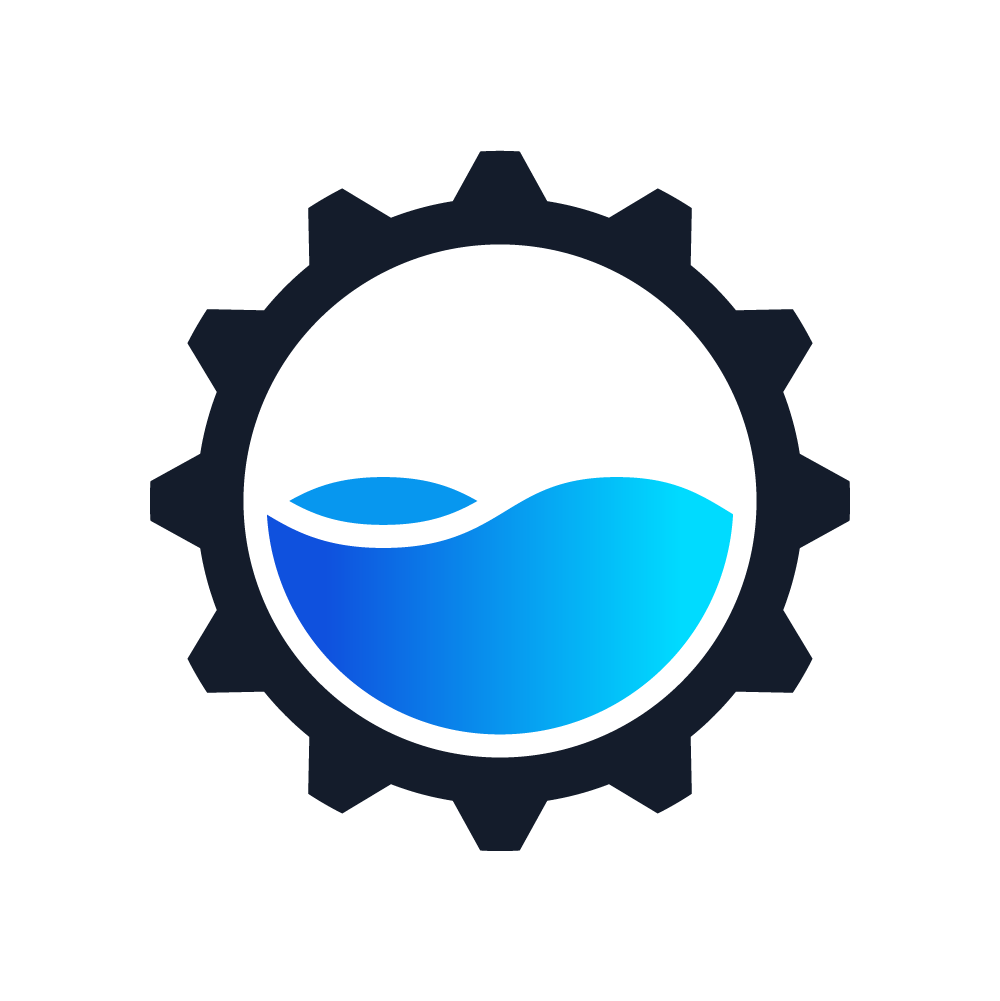
Pool Tools Team
We’re here to share expert advice, practical tips, and clear guides to help you choose, build, and maintain your pool with confidence. From fibreglass shells to everyday equipment, we make pool care simple.

